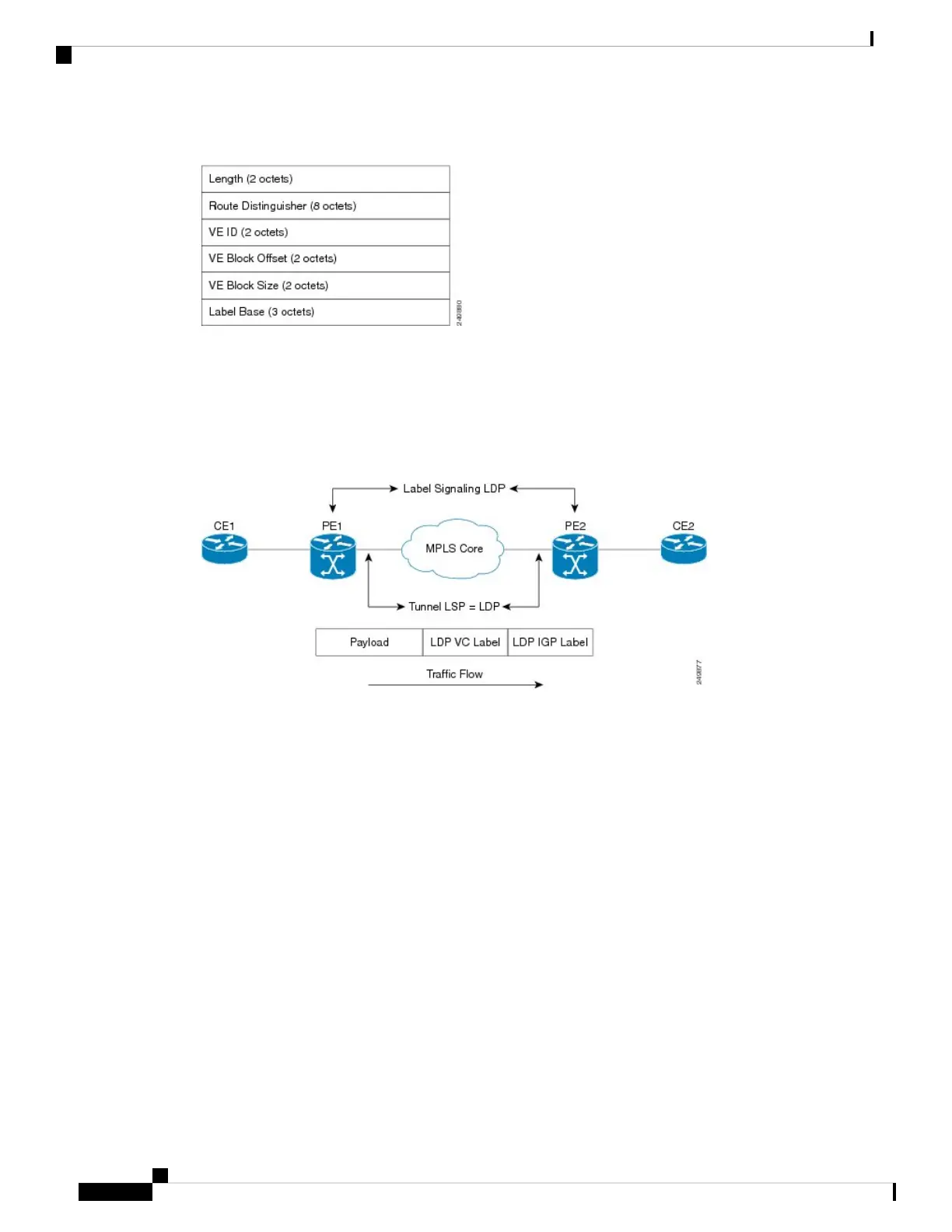Figure 21: NLRI Format
BGP Auto Discovery With LDP Signaling
Signaling of pseudowires requires exchange of information between two endpoints. Label Distribution Protocol
(LDP) is better suited for point-to-point signaling. The signaling of pseudowires between provider edge
devices, uses targeted LDP sessions to exchange label values and attributes and to configure the pseudowires.
Figure 22: Discovery and Signaling Attributes
A PE router advertises an identifier through BGP for each VPLS. This identifier is unique within the VPLS
instance and acts like a VPLS ID. The identifier enables the PE router receiving the BGP advertisement to
identify the VPLS associated with the advertisement and import it to the correct VPLS instance. In this manner,
for each VPLS, a PE router learns the other PE routers that are members of the VPLS.
The LDP protocol is used to configure a pseudowire to all the other PE routers. FEC 129 is used for the
signaling. The information carried by FEC 129 includes the VPLS ID, the Target Attachment Individual
Identifier (TAII) and the Source Attachment Individual Identifier (SAII).
The LDP advertisement also contains the inner label or VPLS label that is expected for the incoming traffic
over the pseudowire. This enables the LDP peer to identify the VPLS instance with which the pseudowire is
to be associated and the label value that it is expected to use when sending traffic on that pseudowire.
NLRI and Extended Communities
The following figure depicts Network Layer Reachability Information (NLRI) and extended communities
(Ext Comms).
L2VPN and Ethernet Services Configuration Guide for Cisco ASR 9000 Series Routers, IOS XR Release 6.3.x
210
Implementing Multipoint Layer 2 Services
BGP Auto Discovery With LDP Signaling

